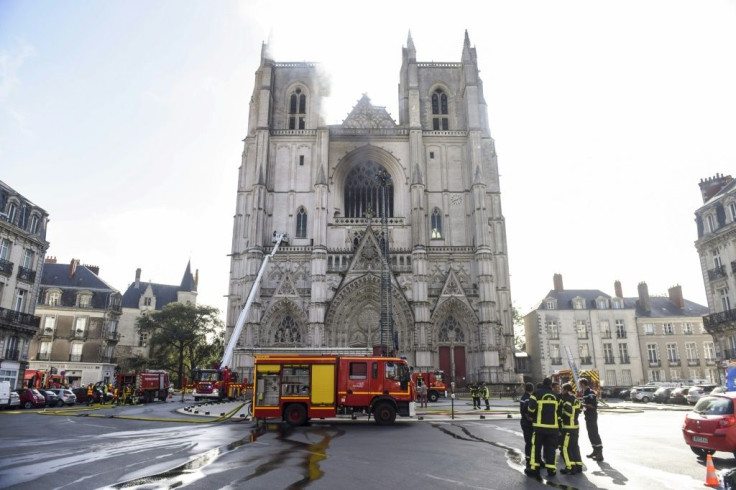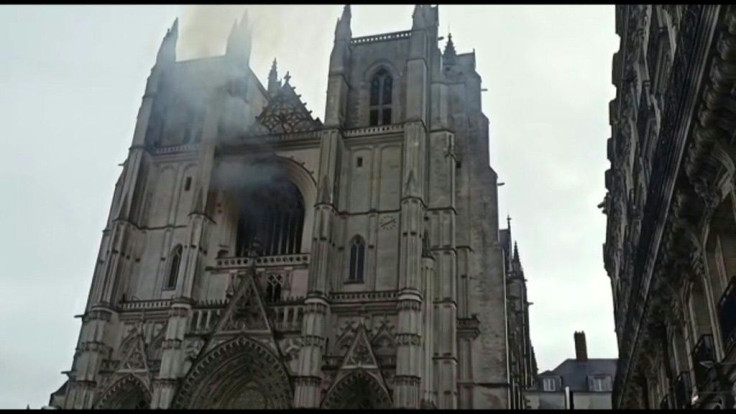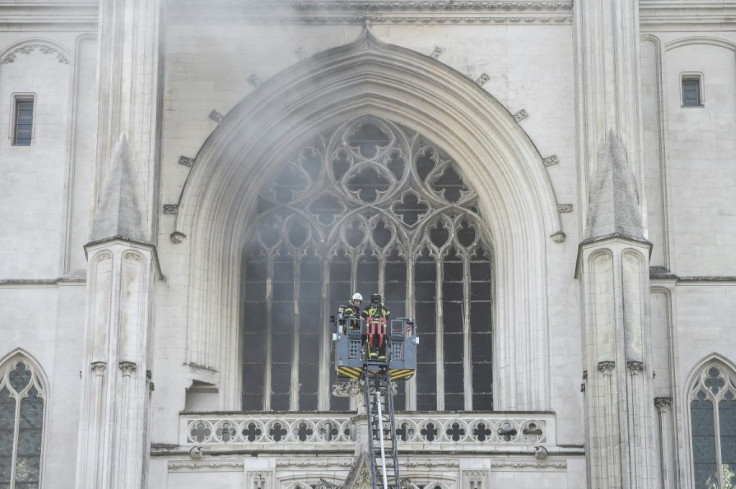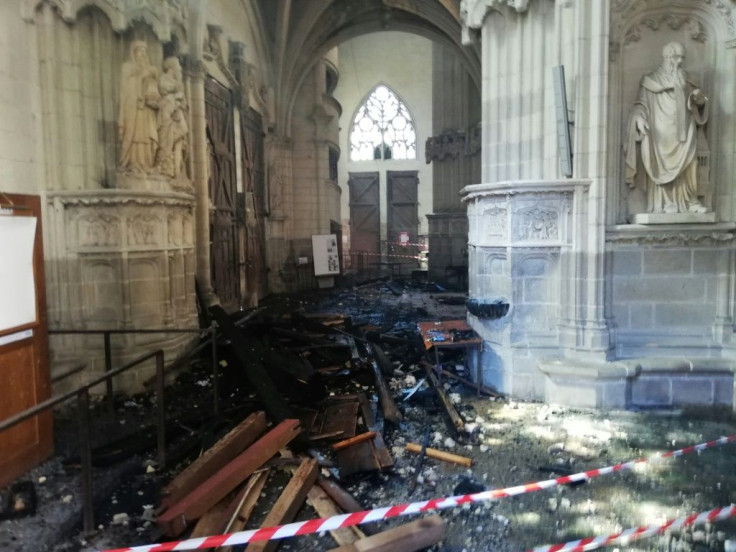Fire Damages French Cathedral, Arson Probe Launched

A fire broke out in three places at the gothic cathedral of Nantes in western France Saturday, destroying stained glass windows and the grand organ and sparking an arson investigation.
Catholic officials mourned the loss of priceless artefacts and paintings as well as the 17th century organ -- a star attraction of the cathedral.
Regional fire chief Laurent Ferlay however said the damage was not comparable to last year's devastating blaze at Notre-Dame cathedral in Paris.
Passers-by saw flames behind the rosette of the Cathedral of St Peter and St Paul and alerted emergency services a little before 08:00 am (0600 GMT).
Roughly 100 firefighters rushed to the scene and managed to save the structure, built between the 15th and 19th centuries, Ferlay said.
Nantes prosecutor Pierre Sennes said the fire had started in three different places, so a judicial investigation for arson was immediately opened.

"When we arrive at a place where a fire has taken place, when you see three separate fire outbreaks, it's a question of common sense, you open an investigation," Sennes told AFP.
The prosecutor said investigators had found no sign of a break-in, but noted that one fire has started near the organ, while the other two were at the other end of the cathedral.

Catholic official Father Fran?ois Renaud, who oversees the cathedral, surveyed the damage with firemen and told AFP the organ console had "completely disappeared", describing it as "an unimaginable loss".
"The console of the choir organ has gone up in smoke along with the adjoining wooden choir stalls. Original stained glass windows behind the great organ have all shattered," he said.
While the blaze was still raging, President Emmanuel Macron tweeted support for "our firefighters who are taking all kinds of risks to save this gothic jewel".

Prime Minister Jean Castex later inspected the damage along with the French ministers of the interior and culture.
He set the investigation and subsequent reconstruction as priorities, saying "the state will play a major role" in the latter.
The building was last hit by fire in 1972 and its roof took more than 13 years to repair.
Cathedral rector Father Hubert Champenois said "everything was in order last night," and that "a very close inspection was made before it closed, like every other evening."
Ferlay played down any comparison with the 1972 blaze or with Notre-Dame, which caught fire during repair work in April last year.
Much of Notre-Dame's roof and wooden structure was destroyed, its steeple collapsed and fumes containing toxic molten lead billowed into the air.
Another church in Nantes -- the Basilica of St Donatian and St Rogatian -- was struck by a fire in 2015 that destroyed three-quarters of its roof.
"I would like to stress that following the 1972 fire, the roof was redone with concrete reinforcement," Ferlay said.
Aside from the destroyed organ, officials said other items lost included a painting by 19th century artist Hippolyte Flandrin and stained glass windows on the facade, some of which contained remnants of 16th century glass.
The organ dated back to 1621 and had undergone five restorations since -- the latest one in 1971.
During the 18th century revolutionary period, authorities had wanted to melt down its pipes for scrap, but the organist argued it could instead be used for "revolutionary ceremonies", according to historian Paul Chopelin.
© Copyright AFP {{Year}}. All rights reserved.





















